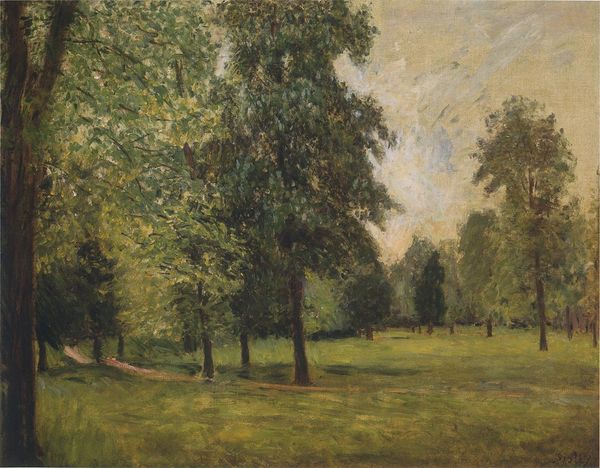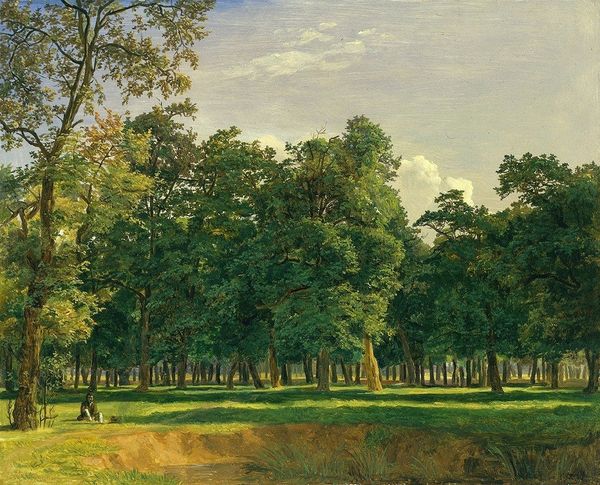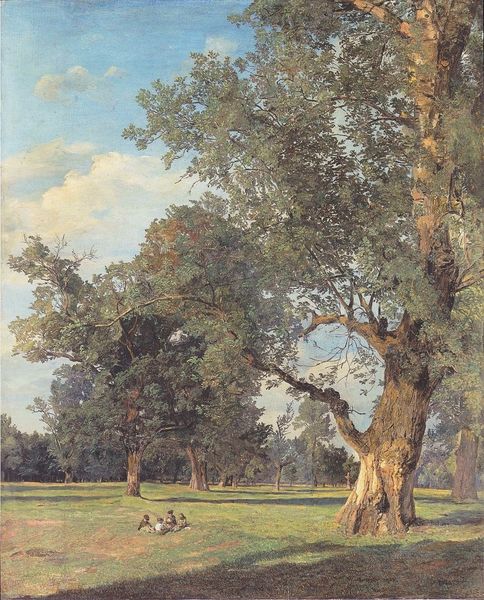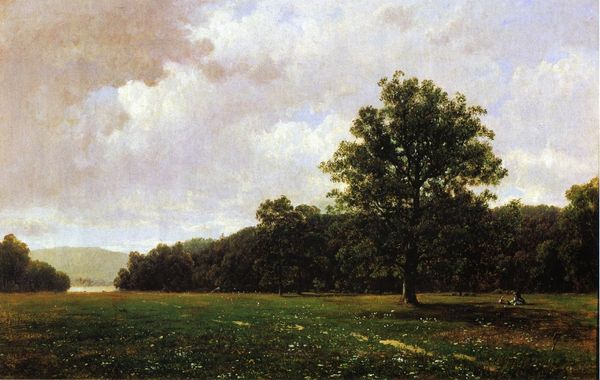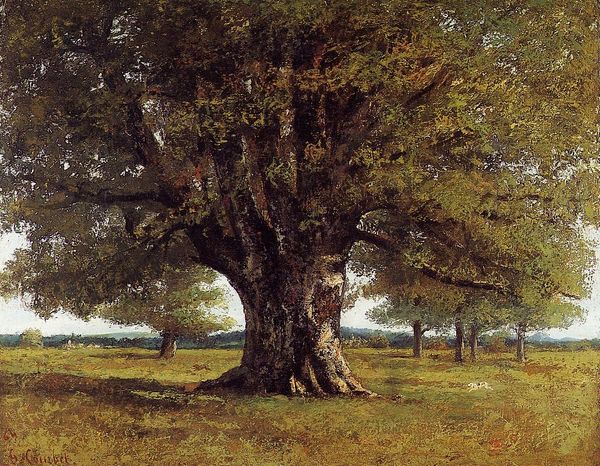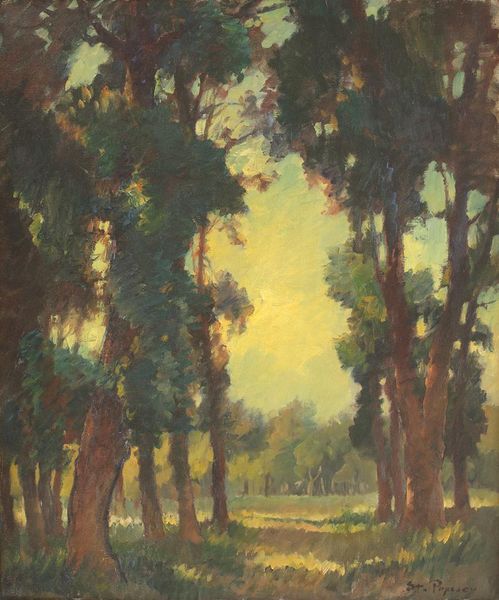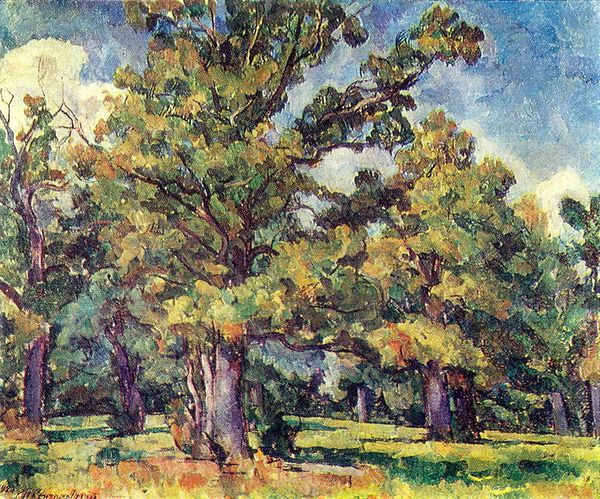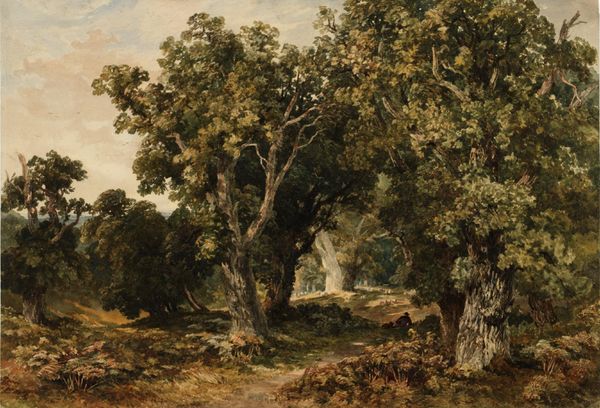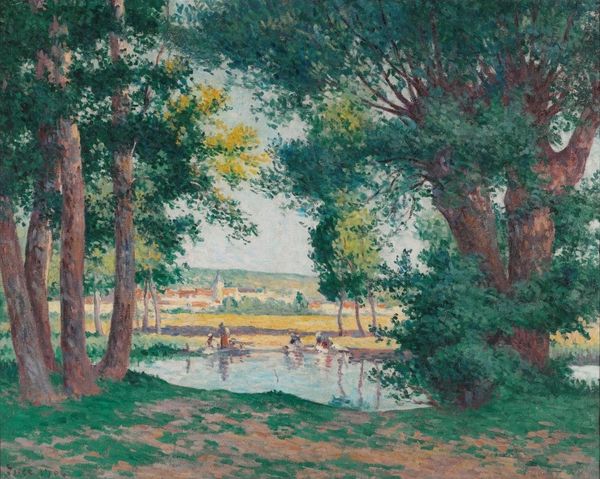
painting, plein-air, oil-paint
#
painting
#
plein-air
#
oil-paint
#
landscape
#
romanticism
#
realism
Copyright: Public domain
Curator: Immediately, I'm struck by the palpable stillness. It's both serene and slightly melancholic. What is this piece, exactly? Editor: This is "Old Elms in Prater," a plein-air oil painting from 1831 by Ferdinand Georg Waldmüller. Curator: Plein-air! It makes perfect sense; you can almost feel the artist's breath, his labor in capturing this space directly from life, unfiltered. I imagine Waldmüller setting up his easel in Prater park, documenting the very act of it's greening through brushstroke and paint, capturing the texture of these living elms. Editor: And more than texture, consider the historical moment. The Prater was already a popular public space, accessible to different social classes, a democratic space of sorts. In what way would that influence his artwork, his chosen point of view? It shows a yearning for something... natural? The looming threat of the industrial revolution could almost be felt here, an appeal for what is organic to not be swallowed by modernity. Curator: That's insightful. Given the burgeoning industrial era, representing nature with such meticulous detail was almost a political act, highlighting traditional modes of existence, and, yes, maybe resisting a homogenous idea of "progress". Note the detail he takes with the light on the elms! Editor: Speaking of detail, I want to point out the decaying tree at the forefront. It could represent the cyclical nature of life and death, decay and regeneration that often appeared in artworks from this era of Realism. It introduces an almost spiritual context alongside the historical. How do we consider our relation to it? Curator: It could also simply be the consequence of material processes at play, and, of course, we have to acknowledge that the wood, pigment, and canvas had particular origins within the landscape of the early nineteenth century. Were new methods of creating paint employed? Was there the mass clearing of forests, in order to fuel emerging technologies, or mass consumerism? Editor: Absolutely! Art, after all, never exists in a vacuum. Considering our ecological landscape from a global view might, today, allow for new dimensions of understanding artworks like this to arise. What Waldmüller does here, with "Old Elms in Prater," seems more relevant today than perhaps it ever has. Curator: Agreed. It’s a deceptively simple painting with incredibly complex implications. I am eager to think further on that interplay.
Comments
No comments
Be the first to comment and join the conversation on the ultimate creative platform.
